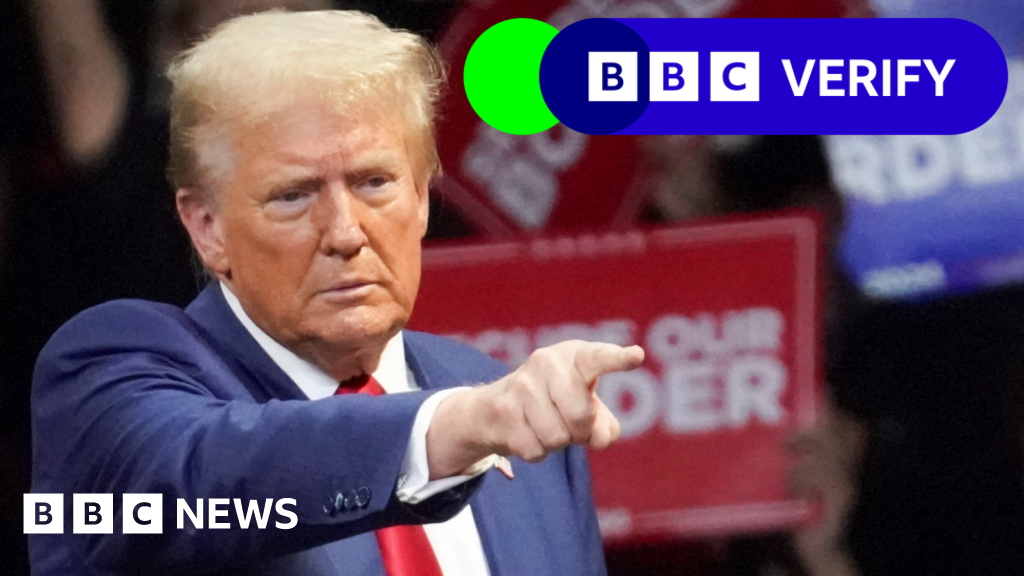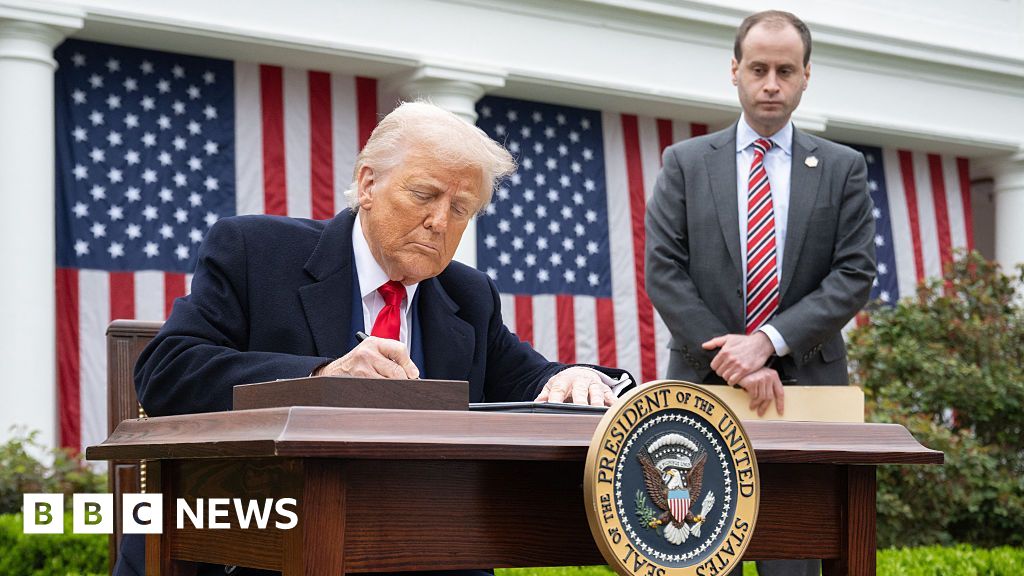## Trump’s Trade War Heats Up: Will Tariffs Sizzle or fizzle?
The world is watching as President Trump unleashes his latest weapon in the ongoing trade war: a sweeping plan to impose tariffs on goods from China and beyond. Dubbed a “global tariffs plan,” this bold move promises to reshape international trade and send shockwaves through global markets. But will it truly deliver on its promises, or will it ultimately backfire, leaving American businesses and consumers footing the bill?

Analysis and Implications
Impact on Global Trade

The tariffs announced by Trump will have a significant impact on global trade. The US is the world’s largest economy, and its trade policies have a ripple effect on the global economy. The tariffs will increase the cost of imports for US companies, which may lead to higher prices for consumers. This could have a negative impact on global trade, particularly for countries that rely heavily on US imports.
The tariffs will also affect US trade partners, including Canada and Mexico, which have already been targeted by Trump’s tariffs. The tariffs will increase the cost of imports for these countries, which could lead to higher prices for consumers and potentially even job losses.
The impact on global trade will also depend on the response of other countries, including China, which has already imposed its own tariffs on US imports. If China imposes retaliatory tariffs on US imports, it could lead to a trade war between the two countries and potentially even global economic instability.
Impact on Global Economy
The impact of the tariffs on the global economy will depend on a number of factors, including the extent to which other countries impose retaliatory tariffs and the response of global markets to the tariffs. The tariffs could potentially lead to a recession in the US and even globally, particularly if they lead to a trade war between the US and other major economies.
However, some economists argue that the tariffs could potentially benefit the US economy by reducing the trade deficit and increasing domestic production. The tariffs could also lead to job creation in the US, particularly in industries such as manufacturing and construction.
Analysis of Trade Deficits
The tariffs are intended to reduce the US trade deficit, which has been a persistent issue for the US economy. The trade deficit is the difference between the value of US imports and exports, and it has been increasing steadily over the past few decades.
The tariffs will increase the cost of imports for US companies, which could lead to higher prices for consumers and potentially even job losses. However, the tariffs could also lead to increased domestic production and job creation, particularly in industries such as manufacturing and construction.
Impact on US Consumers
Impact on Prices and Incomes
The tariffs will increase the cost of imports for US companies, which could lead to higher prices for consumers. The impact on prices will depend on a number of factors, including the extent to which companies pass on the cost of the tariffs to consumers and the response of consumers to the higher prices.
The tariffs could also lead to a reduction in incomes for US consumers, particularly those who rely heavily on imports. However, some economists argue that the tariffs could potentially benefit US consumers by increasing domestic production and job creation.
Analysis of Previous Tariffs
The impact of previous tariffs imposed by Trump has been mixed. Some tariffs have led to increased domestic production and job creation, while others have led to higher prices for consumers and potentially even job losses.
The tariffs imposed on steel and aluminum imports in 2018, for example, led to increased domestic production and job creation in the industries. However, the tariffs also led to higher prices for consumers and potentially even job losses in industries that rely heavily on imports.
Implications for US Consumers
The implications of the tariffs for US consumers will depend on a number of factors, including the extent to which companies pass on the cost of the tariffs to consumers and the response of consumers to the higher prices. The tariffs could potentially lead to a reduction in incomes for US consumers, particularly those who rely heavily on imports.
However, some economists argue that the tariffs could potentially benefit US consumers by increasing domestic production and job creation. The tariffs could also lead to a reduction in the trade deficit and potentially even a recession in the US and globally.
Alternative Scenarios
Absorbing the Cost
Some companies may choose to absorb the cost of the tariffs themselves, rather than passing it on to consumers. This could potentially lead to lower profits for companies, but it could also help to maintain competitiveness in the global market.
Passing on the Cost
Other companies may choose to pass on the cost of the tariffs to consumers, which could lead to higher prices for consumers. This could potentially lead to a reduction in demand for imports, which could have a negative impact on the global economy.
Foreign Exporters Lowering Prices
Foreign exporters may choose to lower their prices in response to the tariffs, which could potentially lead to increased competitiveness in the global market. This could potentially benefit US consumers by providing them with more affordable options for imports.
Practical Aspects
Timeline of Tariffs
The tariffs will take effect on April 5, 2025, with higher tariffs for 60 countries taking effect on April 9, 2025. The tariffs will be imposed on imports of various goods, including textiles, electronics, and machinery.
Countries Affected
The tariffs will affect 60 countries, including China, Mexico, Canada, and the European Union. The tariffs will also affect countries that are not currently major trading partners with the US, but which may potentially benefit from increased competition in the global market.
What’s Next?
The impact of the tariffs will depend on a number of factors, including the extent to which other countries impose retaliatory tariffs and the response of global markets to the tariffs. The tariffs could potentially lead to a recession in the US and even globally, particularly if they lead to a trade war between the US and other major economies.
However, some economists argue that the tariffs could potentially benefit the US economy by reducing the trade deficit and increasing domestic production. The tariffs could also lead to job creation in the US, particularly in industries such as manufacturing and construction.
Practical Aspects
Timeline of Tariffs
The tariffs will take effect on April 5, 2025, with higher tariffs for 60 countries taking effect on April 9, 2025. The tariffs will be imposed on imports of various goods, including textiles, electronics, and machinery.
Countries Affected
The tariffs will affect 60 countries, including China, Mexico, Canada, and the European Union. The tariffs will also affect countries that are not currently major trading partners with the US, but which may potentially benefit from increased competition in the global market.
What’s Next?
The impact of the tariffs will depend on a number of factors, including the extent to which other countries impose retaliatory tariffs and the response of global markets to the tariffs. The tariffs could potentially lead to a recession in the US and even globally, particularly if they lead to a trade war between the US and other major economies.
However, some economists argue that the tariffs could potentially benefit the US economy by reducing the trade deficit and increasing domestic production. The tariffs could also lead to job creation in the US, particularly in industries such as manufacturing and construction.
Conclusion
As the US implements its global tariffs plan, the impact on international trade and the global economy is set to be substantial. According to a comprehensive analysis by the BBC, the tariffs imposed by the US on various countries and goods will lead to a significant increase in prices for consumers worldwide, while also affecting the livelihoods of farmers and workers in the affected countries. The main argument is that while the US tariffs aim to protect domestic industries, they may ultimately harm the global economy and lead to retaliatory measures from other countries. The article also highlights the complexity of the trade system and the need for countries to engage in diplomatic efforts to resolve disputes through dialogue rather than tariffs.
The significance of the topic lies in its potential to reshape the global trade landscape and have far-reaching consequences for countries and industries worldwide. The US tariffs plan has already sparked concerns about the rise of protectionism and the potential for trade wars, which could lead to economic instability and harm to global growth. Furthermore, the article emphasizes the need for policymakers to consider the long-term implications of their decisions and to prioritize cooperation and dialogue in resolving trade disputes.
As the world watches the US tariffs plan unfold, one thing is clear: the future of global trade is uncertain and will depend on the willingness of countries to engage in constructive dialogue and cooperation. As the BBC aptly puts it, “the world waits with bated breath to see how the US tariffs plan will play out, and whether it will be a recipe for growth or a recipe for disaster.” As we move forward, it is essential that policymakers prioritize the global economy and work towards a future where trade is a force for good, rather than a source of conflict and division.
